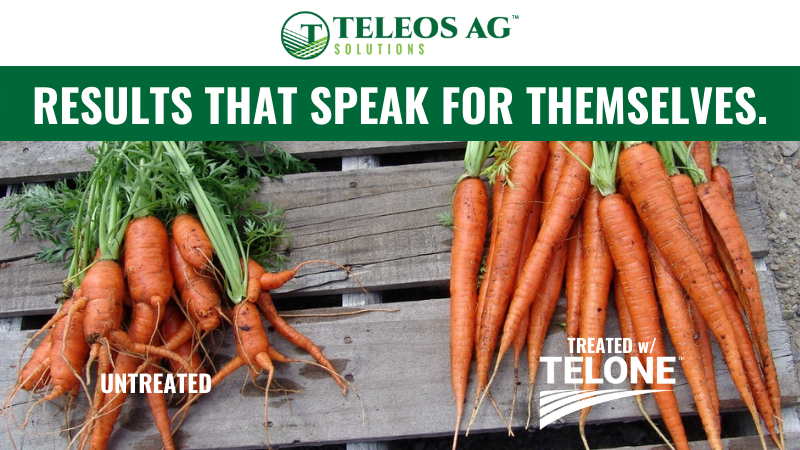Ideas for Vegetable Growers Sure To Boost Off-Season Sales

We asked protected agriculture suppliers for tips on increasing our income during the colder and darker months. Here’s what they had to say.
How can growers improve their chances of increasing crop sales in the off season?
Several environmental conditions in off-season growing lead to plants struggling to function — day length, temperature, energy production, moisture, and nutrient utilization. This stress can affect their productivity.
Technologies like arbuscular mycorrhizal fungi (AMF) provide stress mitigation. AMF creates a healthier plant, and a healthier plant can handle those large swings better. It also helps plants acquire water and nutrients and manage its energy requirement.
– Scott Inman, Director R&D, Regulatory and Facilities, Mycorrhizal Applications LLC
Growing vegetables under cover extends the growing season, providing growers marketing flexibility and profitability. Having the ability to meet customer needs during the off season for field-grown crops provides growers the ability to obtain higher prices from their customers (grocery stores and consumers) when market demand is high and availability is low. Typical supply/demand interaction.
But it is incumbent on the grower to maintain quality, and this is an area when an effective biopesticide is required. Growing quality vegetables means maintaining effective pest management, particularly disease control.
– Bond McInnes, Eastern Technical Services Manager, AgBiome
If growing tomatoes under cover, consider growing both determinate and indeterminate varieties. Determinate tomatoes typically have a concentrated harvest, while indeterminate tomatoes will continue to produce fruit throughout the season. Once the determinate plants are done producing, they can be removed and, depending on your location/climate, they can be replaced with cool-season crops that could be harvested in the fall and even for Thanksgiving sales. Pay attention to days to maturity, but examples of cool-season crops that can be used to replace the determinate tomatoes include beets, carrots, radish, spinach, and Swiss chard.
– Josh Kirschenbaum, Sales Account Manager, Vegetables, PanAmerican Seed
Vary your crops’ harvest times to hit early or later market windows. You can potentially double-crop a facility if you had an early harvesting variety then replanted with another late-season crop as well. Working with your buyers to see what has potential is essential, as is proper sanitation between your various crops to make it all worthwhile.
– Eric Smith, National Sales Manager, Turf and Ornamental Division, BioSafe Systems
For any grower who is interested in maintaining sales through the colder months, I would encourage them to invest in infrastructure.
Look into grants for a high tunnel. Many states, including my home state of New York, have grants available to qualifying farmers for high tunnels.
Heated tunnels are an amazing way to extend your season. There are lots of methods out there. At Juniper Hill Farm, we actually excavated under the high tunnel site and ran hot water loops underground to warm the soil below the greenhouse beds. We also heated the greenhouses themselves with waste oil we obtained from the local restaurants in the area.
Build a bigger cooler and a bigger food storage facility. You can’t sell food in the winter if you don’t have the proper area to store your product. Make it twice as large as you think you need.
Invest in a vehicle that can transport your goods without them freezing. In the summer you need one that keeps your product cold.
– Christine O’Loughlin, Trials Manager, Harris Seeds
Covering crops reduces the influx of pest insects, like thrips and aphids. Please consider that it also keeps out beneficial insects that normally prevent the pest insects from reaching economical damage levels. When pest outbreaks do occur, supplemental introductions of commercially available beneficial insects might be necessary.
Also realize that when you cover your crop during flowering, you restrict natural pollination and need to supplement with commercially available pollinators. Since bumblebees need ultra-violet light to successfully locate the flowers to pollinate, using multi-year plastic crop cover with high UV-block can impact the success of pollination.
Lastly, covering your crop will increase humidity around your crop, potentially increasing the occurrence of certain plant diseases like botrytis, mildew, and Alternaria.
– Ferdi van Elswijk, Key Account Manager North America, Koppert
Growers can slowly add environmental controls until they reach year-round production (if that’s the ultimate goal). The easiest change is converting high tunnels with one layer of film into enclosed greenhouses with two layers of film and adding heating for production in cooler months.
Another thing to consider is hydroponics. This method, which can be a large capital expense, can increase production of leafy greens and some vine crops.
– Adrian Valois, Greenhouse Specialist, GrowSpan Greenhouse Structures










